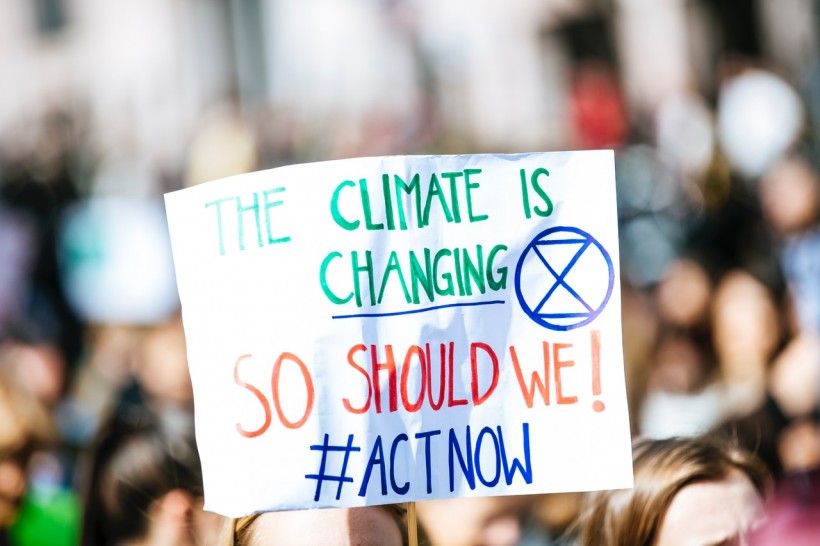On the surface, one could argue that we live in the greatest time ever. And that's thanks to technological advancement. Never before in human history have people been richer, happier and more powerful. The risk of being wiped off by a plague or war is significantly lower, as are the chances of being in a warzone.
But most of our technological inventions and ways of life have negatively impacted the biosphere. And we can't help but feel overwhelmed by the growing risks of climate change.
Tackling Climate Change- Personal Action Counts
The public debate on who should fix climate change often points toward the government, multinational corporations and non-governmental organizations. And so, the solutions are often generalized:
-
Limit the use of fossil fuels.
-
Protect the forests.
-
Set a price on carbon and increase wind and solar power.
But as Mother Earth gets warmer and deadlier, it's time we brought everyone to the table. If anything, coal plants, aircraft and burping cows are not the only contributors to climate change: every decision we make in our daily lives carries a climate cost.
A single person's actions alone are not enough to make a notable change in carbon emissions. But if everybody's carbon footprint contributes to the menace of global warming, then personal action also counts in the fight against it.
Here are six steps you can take to reduce your carbon footprint at home and help fight global warming.
Install Solar Panels
Typical homeowners install solar panels for their financial benefit. A large enough solar system can produce enough electricity for the entire home and even heat your pool, leading to massive savings on energy bills.
But from a climate change point of view, solar panels provide homeowners with clean energy from a renewable source. Unlike fossil fuels, solar panels don't emit emissions to generate power. On the contrary, a standard five-kilowatt solar panel system helps lower your carbon footprint by over 15,000 pounds annually!
Although the cost of solar panels has come down recently, installing and maintaining a whole-house system will still leave a dent in your wallet. But federal tax credits and state rebates and incentives come in handy in cutting down these costs. Also, remember that if your home insurance provider doesn't cover your solar system or offers limited coverage, you may need to purchase a separate solar panel insurance policy.
Reduce Food Waste
Another no-cost way you can help climate change at home is by reducing the amount of food that goes to waste. It's worrying to realize that an average of 150,000 tons of food is tossed away daily in the US.
But what's the link between food wastage and climate change? It's easy. Food wastage also means wastage of the energy and water used in its production, harvesting, storage, packaging and transportation. What's more, when wasted food ends up in landfills, it releases millions of metric tons of carbon dioxide, making the problem of climate change worse by the day. Worldwildlife.org notes that we can reduce human-caused greenhouse emissions by up to 8% simply by stopping food wastage.
Compost Your Food Waste
There are various ways of reducing food wastage at home, including buying just what is enough, utilizing your freezer and storing food correctly.
But all is not lost if you can't avoid food wastage completely. Consider composting instead of directing your food scraps to the landfills. Composting wasted food helps reduce methane emissions, which are linked to climate change. Another way composting reduces our impact on the planet is by reducing the need for chemical fertilizers that are often linked to water, soil and air pollution.
Reduce Energy Use
As a homeowner, reducing energy use is an easy way of saving money on power bills. But the benefits of energy efficiency go beyond cutting your electricity bill to helping save the environment. When you use less power at home, you dial down the amount of fossil fuel required by power plants. This helps conserve the earth's natural resources and lowers the number of harmful gasses pumped into the atmosphere, including carbon dioxide, nitrous monoxide and methane.
Here are tips and tricks on how to reduce your household energy use:
-
Replace incandescent bulbs with LED bulbs that cut electricity use by 75%, besides being more durable.
-
Take advantage of natural light.
-
Turn off unnecessary lights.
-
Install solar power for landscape lighting.
-
Shut down your electricity devices at night.
-
Install motion-sensitive lights.
-
Upgrade your HVAC system.
-
Use fans instead of AC.
Use Water Efficiently
Water is the main victim of the ongoing global climate crisis. Over 90% of all climate-change-related disasters are linked to water, from droughts to desertification and worsening water quality.
When you think about it, household water efficiency can be used as a weapon to tackle climate change. By saving water, you're lowering the amount of energy used to produce, store and transport it. In other words, you're reducing greenhouse gas emissions that typically result from all the processes necessary to get that water to your home. On top of that, using less water means that less energy is required. And thanks to these energy savings, less water is required to generate more electricity.
-
Take shorter showers
-
Wait till you have a full load to run the dishwasher and the washing machine
-
Fix leaks around your home
-
Install an efficient toilet with a dual flush mechanism
-
Switch to water-saving showerheads
-
Shut off the shower while lathering up
Lower Your Fashion Carbon Footprint
You may not have thought about it this way, but your fashion choices could be hurting the planet. The clothing industry is among the most water-intensive sectors globally, consuming upwards of 90 million cubic meters of water annually. But what's even worse is that over 85% of the textiles either end up in landfills or are burned. Either way, they release more carbon dioxide, methane and other greenhouse gases, worsening global warming.
So, how can you lower your fashion carbon footprint?
-
Buy less
-
Think before you buy.
-
Buy clothes from environmentally-friendly brands
-
Donate clothes instead of burning or throwing away
-
Choose quality over quantity
-
Consider buying second hand, swapping or renting
© 2024 NatureWorldNews.com All rights reserved. Do not reproduce without permission.
* This is a contributed article and this content does not necessarily represent the views of natureworldnews.com






